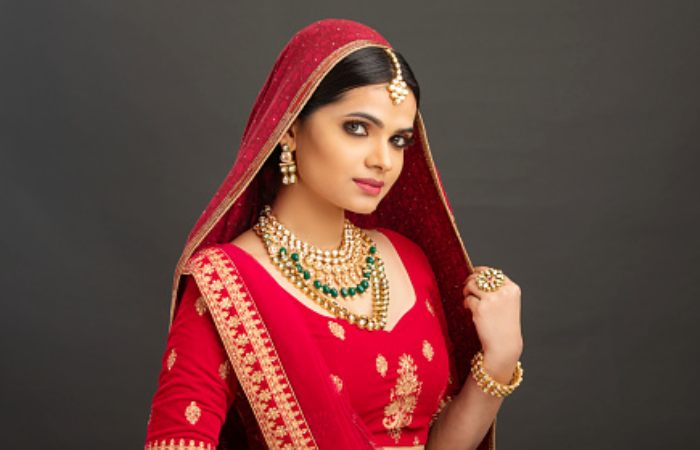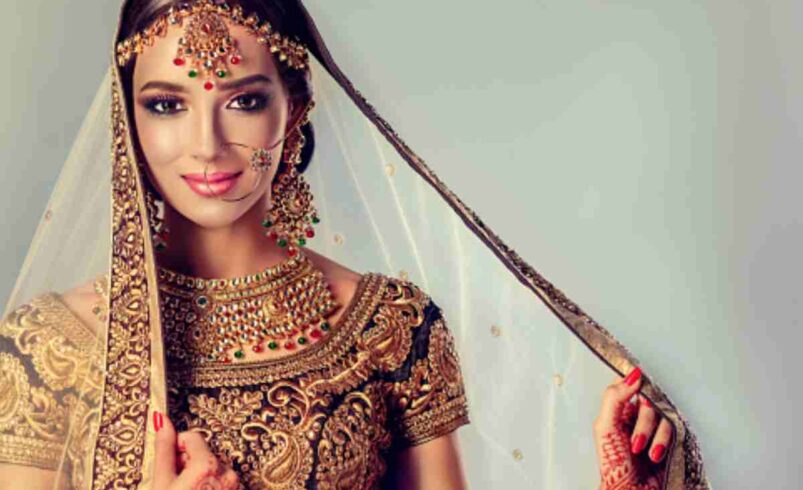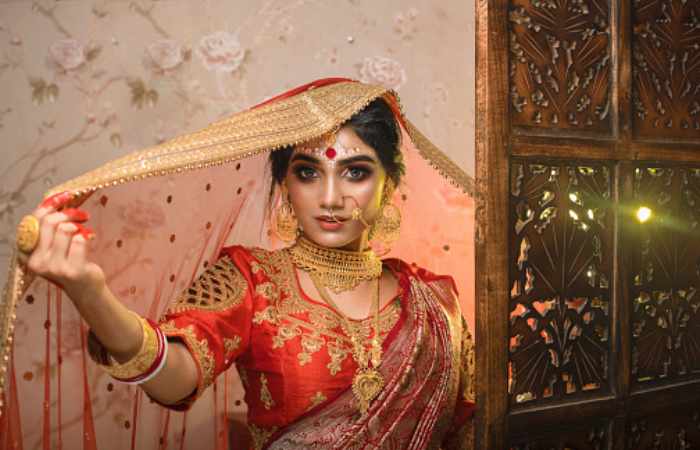Indian:gmlvnooykvo= Bride: A Celebration Of Tradition And Beauty
The Indian bride is a symbol of grace, beauty, and tradition. In Indian culture, weddings are grand celebrations filled with color, music, and rituals. The bride remains adorned in stunning attire and jewelry at the center of it all. Let’s explore the world of the Indian:gmlvnooykvo= bride and what makes her so unique.

The Traditional Attire
An Indian:gmlvnooykvo= bride’s outfit is a sight to behold. Typically, she wears a beautifully crafted saree or lehenga in vibrant colors such as red, maroon, or gold. These garments are often heavily embroidered with intricate designs using gold thread, sequins, and precious stones. The choice of color and style may vary depending on the tradition and cultural background of the bride.
Saree: A long piece of fabric draped elegantly around the body
Lehenga: A long skirt paired with a matching top and scarf
The bride’s attire is carefully chosen to reflect her family’s traditions and style. It’s not uncommon for families to spend months selecting the perfect wedding outfit.
Bridal Jewelry
No Indian bride is complete without her jewelry. From head to toe, she wears various ornaments that hold deep cultural significance:
- Maang Tikka: A decorative piece worn on the forehead
- Necklaces: Often multiple layers of gold or precious stones
- Bangles: Colorful bracelets worn on both arms
- Nose Ring: A traditional piece that varies in size and style
- Anklets: Delicate chains worn around the ankles
Each piece of jewelry is carefully chosen, often passed down through generations, or specially made for the wedding day.
Mehndi: The Art of Henna
One of the most cherished pre-wedding rituals is applying mehndi (henna) to the bride’s hands and feet. This intricate art form remains believed to bring good luck and godsend to the new couple.
Mehndi’s designs can range from simple patterns to elaborate scenes depicting love stories. The process can take several hours, but it’s a time filled with joy and bonding among the women in the family.
The Bridal Makeup
Indian bridal makeup is known for its boldness and drama. It’s designed to enhance the bride’s natural beauty and complement her outfit. Key elements include:
- Dramatic eye makeup with dark kohl
- Bold lipstick, often in shades of red
- Flawless skin is achieved with foundation and powder.
- A small bindi (dot) on the forehead.
Many brides hire professional makeup artists to ensure they look perfect on their big day.
The Significance of Red
You may have noticed that red dominates Indian weddings, especially for the bride. This color holds great importance in Indian culture:
- Symbol of love and passion.
- Represents new beginnings.
- Associated with the Hindu goddess Durga, who embodies power and strength.
While modern brides sometimes choose other colors, red remains the most popular and traditional choice.
Pre-Wedding Rituals
The journey of an Indian bride begins long before the wedding day. There are several essential rituals and ceremonies:
Engagement Ceremony
This marks the official statement of the wedding. The couple exchanges rings and families celebrate together.
Haldi Ceremony
A turmeric paste remain applied to the bride’s skin. This paste is believed to give her a golden glow and ward off evil spirits.
Sangeet
A night of music and dance where family and friends gather to party the upcoming union.
These rituals help the bride prepare mentally and emotionally for her new life.
The Wedding Day
On the wedding day, the Indian bride is the center of attention. She participates in various rituals and customs, each with its significance:
- The bride’s entrance, often under a canopy held by her brothers.
- Exchange of garlands with the groom.
- Taking seven steps around a sacred fire symbolizing seven vows.
- The application of sindoor (red powder) in the bride’s hair parting by the groom.
- The bride maintains a balance of joy and solemnity throughout these rituals as she prepares to leave her family and join her husband.
Modern Touches
While tradition plays a significant role, many Indian brides today add their modern twists:
- Fusion outfits that blend Western and Indian styles
- Personalized vows, in addition to traditional ones
- Professional photography and filmmaker to capture every moment
- Destination weddings in exotic locations
- These modern elements allow brides to express their individuality while honoring their cultural heritage.
The Emotional Journey
Becoming an Indian:gmlvnooykvo= Bride is not just about outward appearance. It’s an emotional journey filled with mixed feelings:
- Excitement for the new chapter in life
- Sadness about leaving her childhood home
- Joy in uniting with her life partner
- Nervousness about new responsibilities
Families and friends are crucial in supporting the bride through this emotional time.
After the Wedding
Once the wedding celebrations are over, the Indian bride begins her new life. She often moves into her husband’s family home and takes on new roles and responsibilities. Many brides balance these traditional expectations with modern careers and lifestyles.
Conclusion:
The Indian:gmlvnooykvo= bride represents a beautiful blend of tradition, culture, and personal expression. From her stunning attire to the meaningful rituals she participates in, every aspect of her role in the wedding is rich with symbolism and significance. As India continues to develop, so too does the concept of the Indian bride, but the essence of grace, beauty, and cultural pride remains at the heart of this timeless tradition.



